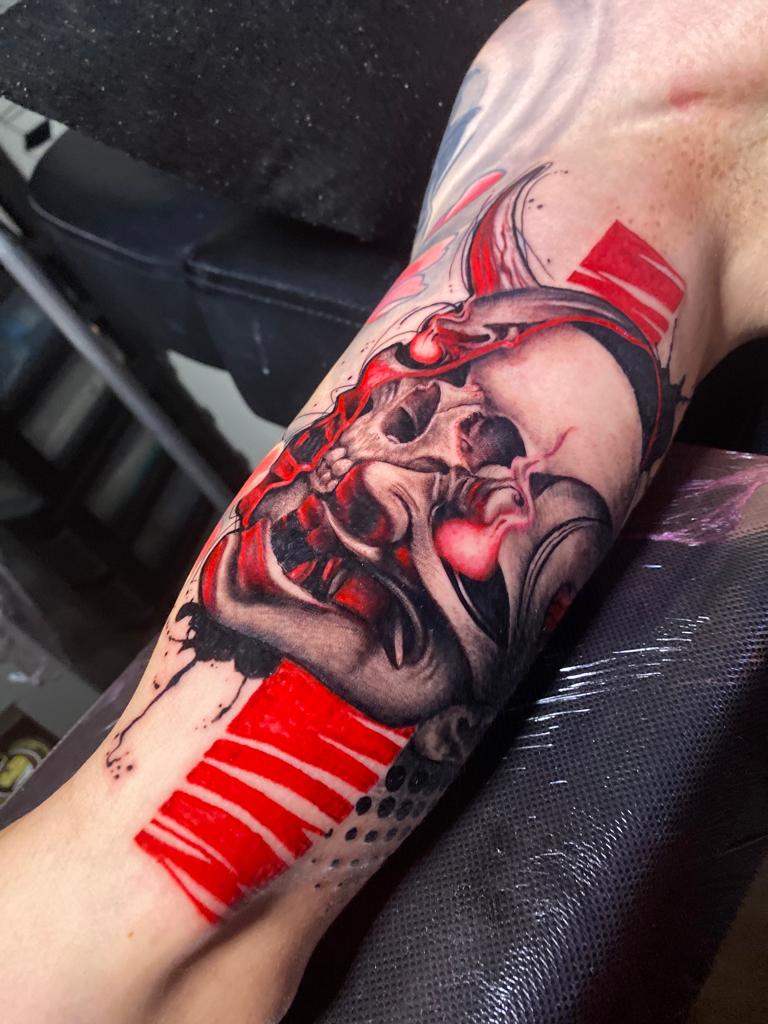Tattoo flu is a term that has gained traction among tattoo enthusiasts and newcomers alike. This peculiar phenomenon describes a set of flu-like symptoms that some individuals experience after getting a tattoo. While it may sound alarming, understanding what tattoo flu really means can help demystify the experience and prepare those considering body art. So, what causes this reaction, and how can one manage it effectively? In this article, we will delve into the various aspects of tattoo flu, exploring its symptoms, causes, and ways to alleviate discomfort.
When someone decides to get a tattoo, they often envision a beautiful piece of art adorning their skin. However, many do not anticipate the potential aftermath of the procedure. The body’s natural response to the trauma of getting inked can lead to the development of tattoo flu. This reaction can be influenced by various factors, including the individual's immune system, the size and placement of the tattoo, and the aftercare practices employed. By addressing these elements, individuals can better navigate their tattoo journey.
Moreover, tattoo flu serves as a reminder of the importance of proper hygiene and aftercare in the tattoo process. While the sensation of getting a tattoo can be thrilling, the potential for post-tattoo discomfort can dampen the experience if not managed correctly. In the following sections, we will answer common questions surrounding tattoo flu and offer insights into how to deal with it effectively.
What Are the Symptoms of Tattoo Flu?
Understanding the symptoms of tattoo flu is essential for anyone considering getting inked. Common symptoms may include:
- Fatigue
- Fever or chills
- Headaches
- Muscle aches
- Swelling around the tattoo area
It's important to note that not everyone will experience these symptoms, and their severity can vary widely. In many cases, these reactions are short-lived and can be managed with proper care.
How Long Does Tattoo Flu Last?
One of the most frequently asked questions regarding tattoo flu is how long it lasts. Typically, the symptoms can last from a few hours to a couple of days. Factors that can influence the duration include:
- The size and complexity of the tattoo
- The individual's overall health
- Aftercare practices
By following the recommended aftercare guidelines, individuals can help reduce the likelihood and severity of tattoo flu symptoms.
Can Tattoo Flu Be Prevented?
While it may not be entirely preventable, there are several steps individuals can take to minimize the risk of experiencing tattoo flu:
- Choose a reputable tattoo artist and studio
- Stay well-hydrated before and after getting a tattoo
- Ensure proper aftercare, including cleaning and moisturizing the tattoo
By taking these precautions, individuals can contribute to a smoother tattoo experience and reduce the chances of experiencing tattoo flu.
What Causes Tattoo Flu?
The underlying causes of tattoo flu can be attributed to the body's immune response to the trauma of getting a tattoo. When the skin is punctured by needles, the body reacts by sending white blood cells to the area to heal the wound. This immune response can result in symptoms similar to those of the flu. Other factors that can contribute to tattoo flu include:
- Allergic reactions to ink or other materials used
- Infection at the tattoo site
- Stress or anxiety related to the tattoo process
Is Tattoo Flu Dangerous?
While tattoo flu can be uncomfortable, it is generally not dangerous. Most symptoms are mild and resolve on their own within a short period. However, if symptoms persist or worsen, it may be a sign of an infection or allergic reaction, and individuals should seek medical advice. It's crucial to monitor the tattoo site for any signs of infection, such as:
- Increased redness or swelling
- Pus or other discharge
- Severe pain
In such cases, consulting a healthcare professional is vital to prevent complications.
How Can You Treat Tattoo Flu Symptoms?
For those experiencing tattoo flu, several home remedies can help alleviate symptoms:
- Rest and allow the body to recover
- Stay hydrated by drinking plenty of fluids
- Take over-the-counter pain relievers if necessary
- Apply a cool compress to the tattooed area to relieve swelling
Following these steps can significantly improve comfort levels during the recovery process.
Who Is Most Likely to Experience Tattoo Flu?
While anyone can experience tattoo flu, certain individuals may be more susceptible, including:
- Those with weakened immune systems
- Individuals who have multiple tattoos done in one session
- People who do not follow aftercare instructions
Awareness of these factors can help individuals prepare for the possibility of tattoo flu and take proactive measures to minimize its impact.
Conclusion: Embracing the Tattoo Experience
Tattoo flu is a relatively common response to the body’s reaction to getting inked. By understanding the symptoms, causes, and ways to manage them, individuals can approach their tattoo journey with confidence. Remember, while the experience of getting a tattoo can be thrilling, it’s essential to prioritize aftercare and listen to your body. With the right precautions and knowledge, you can fully embrace the art of tattooing without the worries of tattoo flu overshadowing your experience.



ncG1vNJzZmivp6x7s7HBnqOrmZ6YtbjFzmeaqKVfnru0tcahq6xpY2TBosDTqKZmnpyqe6nAzKU%3D